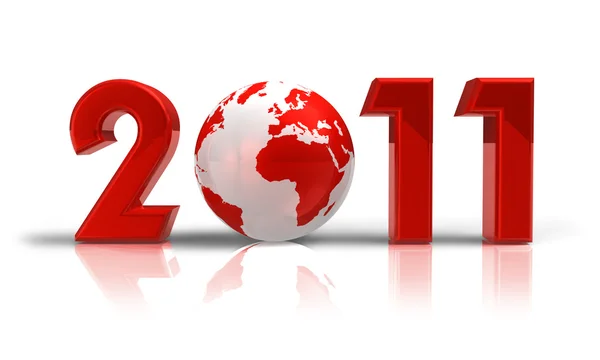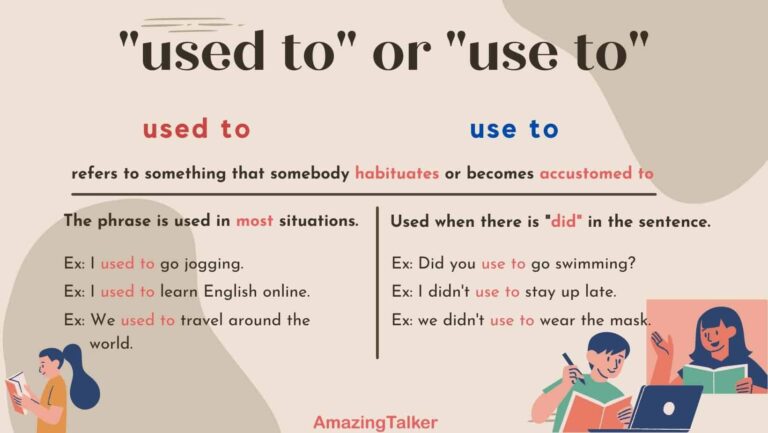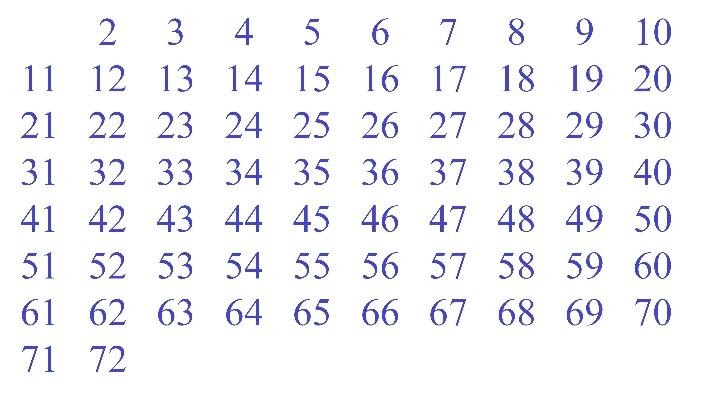4.0l Jeep Engine For Sale: Your Comprehensive Guide to Reviving an Icon
4.0l Jeep Engine For Sale: Your Comprehensive Guide to Reviving an Icon /jeeps.truckstrend.com
The rumble of a 4.0-liter inline-six engine is more than just a sound to Jeep enthusiasts; it’s the heartbeat of an automotive legend. Renowned for its bulletproof reliability, impressive torque, and remarkable longevity, the AMC 242 (as it’s formally known) powered millions of Jeep Cherokees (XJ), Wranglers (YJ, TJ), and Grand Cherokees (ZJ, WJ) for over two decades. Even today, long after its production ceased, the 4.0L remains a highly sought-after powerplant, a testament to its enduring design and the dedication of the Jeep community.
Whether your beloved XJ’s odometer has finally spun too many miles, your TJ needs a fresh lease on life, or you’re planning an ambitious swap, finding a reliable "4.0l Jeep Engine For Sale" is often the first critical step. This comprehensive guide will navigate you through the world of buying, evaluating, and understanding this iconic engine, ensuring you make an informed decision that keeps your Jeep roaring for years to come.
4.0l Jeep Engine For Sale: Your Comprehensive Guide to Reviving an Icon
The Legend Lives On: Why the 4.0L Jeep Engine?
The 4.0L inline-six isn’t just an engine; it’s a symbol of rugged dependability. Introduced in 1987, it quickly became the definitive engine for a generation of Jeeps. Its inline-six configuration inherently offers superior balance and smoothness compared to V6 designs, while its undersquare design (stroke longer than bore) contributes to its legendary low-end torque – perfect for off-roading and daily driving alike.
Key attributes that make the 4.0L a perennial favorite include:
- Robust Construction: A cast-iron block and cylinder head, along with a sturdy crankshaft and connecting rods, were built to withstand immense abuse.
- Simplicity: Fewer moving parts than more modern, complex engines means easier diagnosis and repair for the DIY mechanic.
- Abundant Parts Availability: Given the millions produced, spare parts are plentiful and relatively inexpensive.
- Torque Monster: Its strong low-end torque makes it ideal for crawling over obstacles or hauling gear.
- Modifiability: A vast aftermarket supports performance upgrades, from basic bolt-ons to stroker kits that can push displacement to 4.7L or more.

For many, replacing a tired 4.0L with another 4.0L is a no-brainer. It avoids the complexities of engine swaps, maintains the vehicle’s original character, and leverages an already proven, reliable platform.
Understanding Your Needs: New, Remanufactured, or Used?
When searching for a 4.0L Jeep engine, you’ll generally encounter three main categories, each with its own benefits and drawbacks. Understanding these differences is crucial for making the right choice for your budget and performance expectations.

1. Used Engines (Salvage/Pull-outs)
- Description: These are engines pulled directly from donor vehicles, often from salvage yards or private sellers. They come "as-is," with varying mileage and unknown histories.
- Pros:
- Lowest Cost: Generally the most budget-friendly option.
- Quick Availability: Can often be sourced locally and quickly.

- Cons:
- Unknown History: You won’t know how the engine was maintained, if it overheated, or its true condition.
- No Warranty (or very limited): Most salvage yards offer a minimal 30-90 day warranty, if any, often only covering a replacement engine, not labor.
- Wear and Tear: Expect significant wear on internal components, seals, and gaskets.
- Best For: Those on a very tight budget, or individuals planning a complete rebuild themselves, where the block and head are the primary components needed.
2. Remanufactured Engines
- Description: These engines have been completely disassembled, inspected, machined, and rebuilt to original (or better) specifications. Worn components (pistons, rings, bearings, camshaft, valves, seals) are replaced with new ones.
- Pros:
- "Like-New" Performance: You get a zero-mile engine that’s been professionally rebuilt.
- Warranty: Reputable remanufacturers offer warranties, typically 1-3 years, covering parts and sometimes labor.
- Cost-Effective: Significantly cheaper than a brand-new engine (if one were available), offering excellent value.
- Quality Control: Reputable companies follow strict quality control processes.
- Cons:
- Higher Cost than Used: More expensive than a simple pull-out engine.
- Core Charge: Most require a refundable "core charge" until your old engine is returned.
- Best For: Those seeking reliability, longevity, and peace of mind without the uncertainty of a used engine. This is often the sweet spot for most buyers.
3. New Crate Engines
- Description: For the 4.0L Jeep, truly "new" crate engines directly from Mopar are extremely rare, if not entirely unavailable, as production ceased years ago. When you see "new crate," it often refers to a custom-built, high-performance engine from a specialized shop, or perhaps a very low-mileage, professionally rebuilt unit marketed as "new."
- Pros:
- Ultimate Reliability: If genuinely new, it’s the freshest possible engine.
- Longest Warranty: Typically comes with a substantial warranty.
- Cons:
- Extremely Rare/Non-existent: Almost impossible to find a truly new 4.0L.
- Highest Cost: If available, it would be the most expensive option by far.
- Best For: Enthusiasts building a show-quality vehicle or seeking maximum performance from a custom builder. For the average buyer, this is not a practical option.
Where to Find a 4.0L Jeep Engine For Sale
The market for 4.0L Jeep engines is robust, with several avenues for sourcing one:
- Specialized Engine Suppliers/Remanufacturers: Companies like Fraser Engines, Jasper Engines, ATK Engines, and various smaller regional rebuilders specialize in remanufactured engines. They offer warranties, often handle shipping, and have customer support.
- Salvage Yards/Auto Recyclers: Local junkyards are a good starting point for used engines. Online databases like Car-Part.com can search thousands of yards nationwide.
- Online Marketplaces: eBay, Facebook Marketplace, and Craigslist are popular for private sales. Exercise extreme caution here; "buyer beware" is paramount. Verify seller reputation and inspect engines in person if possible.
- Jeep Forums and Enthusiast Communities: Websites like CherokeeForum.com, JeepForum.com, and various Facebook groups often have "for sale" sections where members sell engines they’ve pulled or rebuilt. This can offer more transparency and direct communication with sellers who understand Jeeps.
What to Look For When Buying a 4.0L Jeep Engine
Regardless of where you buy, thorough inspection and due diligence are critical.
- Compression Test (for Used Engines): This is non-negotiable. A healthy 4.0L should have compression readings around 120-150 psi per cylinder, with no more than a 10-15% variance between cylinders. Low or inconsistent readings indicate worn rings, valves, or head gasket issues.
- Oil Condition and Appearance:
- Sludge: Indicates poor maintenance.
- Milky/Foamy: Suggests coolant in the oil (blown head gasket, cracked head).
- Metallic Flakes: A very bad sign of internal bearing or component failure.
- Coolant Condition: Look for signs of oil in the coolant (often looks like foam or sludge in the radiator or overflow tank).
- External Leaks: Inspect the valve cover, oil pan, front and rear main seals, and timing cover for significant oil leaks. While many 4.0Ls leak a bit, excessive leakage points to neglected seals.
- Casting Numbers and Year Compatibility: The 4.0L evolved over its production run.
- Cylinder Head: Be aware of the infamous "0331" cylinder head (found on 2000-2001 XJs and 2000-2006 TJs), which is prone to cracking. If buying an engine from these years, confirm it has a "TUPY" stamp (an improved casting) or an aftermarket head.
- Sensor Locations: Later engines (e.g., coil-on-plug in 2000+) have different sensor configurations and wiring harness needs. Ensure the engine is compatible with your Jeep’s year and wiring.
- Accessories Included: Does the engine come as a "long block" (block, head, oil pan, valve cover) or a "dressed" engine (including intake/exhaust manifolds, alternator, power steering pump, AC compressor, etc.)? Dressed engines are more expensive but save time and potentially cost.
- Documentation: For remanufactured engines, get a clear warranty statement. For used engines, if possible, get information on the donor vehicle (VIN, mileage).
- Seller Reputation: Buy from reputable businesses or individuals with positive reviews. Avoid deals that seem too good to be true.
Installation Considerations and Post-Purchase Tips
Once you’ve found your 4.0L, the next step is getting it installed and running optimally.
- Professional Installation vs. DIY: Swapping an engine is a significant undertaking. If you lack the tools, space, or mechanical expertise, professional installation is highly recommended. Factor in labor costs ($800 – $2000+) into your total budget.
- Ancillary Components: It’s wise to replace many wear items during an engine swap, regardless of the engine’s condition:
- Motor mounts
- Hoses (radiator, heater, vacuum)
- Belts
- Spark plugs, wires, distributor cap, rotor (if applicable)
- All fluids (engine oil, coolant, power steering fluid)
- Thermostat and housing
- Water pump
- Oxygen sensors
- Rear main seal (especially common on 4.0Ls – replace it while the engine is out!)
- Break-in Procedure (for Remanufactured/Rebuilt Engines): Follow the manufacturer’s specific break-in instructions. This usually involves varied RPMs, avoiding prolonged high RPMs, and an early oil change (e.g., after 500 miles) to remove assembly lubricants and seating debris.
- Cooling System Inspection/Upgrade: The 4.0L is sensitive to overheating. Ensure your cooling system (radiator, fan clutch, water pump) is in top condition. Many owners upgrade to an aluminum radiator.
Potential Challenges and Solutions
While the 4.0L is generally robust, being aware of common challenges can save you headaches.
- The "0331" Cylinder Head Issue: As mentioned, 2000-2001 XJ and 2000-2006 TJ engines with the "0331" head casting (without the "TUPY" stamp) are prone to cracking between cylinders 3 and 4 due to a thin casting.
- Solution: Replace with a "TUPY" head, an aftermarket head (e.g., Clearwater Cylinder Head), or an earlier 4.0L head (minor modifications might be needed for sensor compatibility).
- Rear Main Seal (RMS) Leaks: The 4.0L is notorious for RMS leaks. While not catastrophic, it’s messy.
- Solution: Always replace the RMS when the engine is out. It’s much easier to do then.
- Finding the Right Year/Sensor Compatibility: Different years had different sensor types and locations (e.g., camshaft position sensor, crank position sensor, manifold absolute pressure sensor).
- Solution: Research thoroughly. Often, you can swap your existing sensors and sometimes even the intake manifold onto a donor engine from a different year, but verify compatibility first.
- Shipping Costs: Engines are heavy. Shipping across states can add hundreds of dollars to the total cost. Factor this in when comparing prices.
4.0L Jeep Engine For Sale: Price Guide
Here’s a general table of expected price ranges and considerations for different types of 4.0L Jeep engines. Prices can vary significantly based on location, seller, included accessories, and market demand.
| Engine Type | Condition/Mileage | Warranty | Price Range (USD) | Key Considerations |
|---|---|---|---|---|
| Used (Pull-out) | 100,000 – 250,000+ miles | None – 90 days | $500 – $1,800 | "As-is" condition. Unknown history. Best for rebuild or very tight budgets. Thorough inspection is critical. |
| Remanufactured | 0 miles (rebuilt to spec) | 1 year – 3 years | $2,000 – $3,500 | Like-new performance. Quality controlled. Excellent value for reliability. Core charge often applies. |
| Long Block (Reman) | 0 miles (rebuilt to spec) | 1 year – 3 years | $1,800 – $3,000 | Includes block, head, rotating assembly. Requires swapping your intake/exhaust, accessories. More affordable than full dressed. |
| Short Block (Reman) | 0 miles (rebuilt to spec) | 1 year – 3 years | $1,200 – $2,500 | Includes block, crankshaft, rods, pistons. Requires your head, oil pan, timing cover, etc. For advanced builders. |
| Custom/Performance Build | 0 miles (custom-built) | Varies (often 1-3 years) | $4,000 – $7,000+ | Specialized shops. Can include stroker kits, head porting, etc. Highest performance, premium cost. |
Note: Truly "new" 4.0L crate engines from Mopar are not generally available on the market as production has ceased. Prices for used engines are highly dependent on mileage, perceived condition, and whether it’s a private sale or from a commercial salvage yard.
Frequently Asked Questions (FAQ)
Q: What years did the 4.0L engine come in Jeeps?
A: The 4.0L inline-six was used from 1987 (Cherokee XJ) until 2006 (Wrangler TJ and Liberty KJ, though the KJ’s 3.7L V6 replaced the 4.0L by then). Its primary reign was in the Cherokee XJ (1987-2001), Wrangler YJ (1991-1995), Wrangler TJ (1997-2006), and Grand Cherokee ZJ (1993-1998) and WJ (1999-2004).
Q: Are all 4.0L engines interchangeable?
A: While the core block and head design remained largely consistent, there are significant differences in sensor locations, accessory mounting points, and cylinder head castings across model years. Always try to match the engine year to your vehicle’s year, or be prepared for sensor/wiring swaps and potential modifications. The 2000-2001 XJ and 2000-2006 TJ engines (with coil-on-plug ignition) are often considered unique due to their head design and ignition system.
Q: What’s the difference between a "long block" and a "short block"?
A:
- Long Block: Typically includes the cylinder block, crankshaft, connecting rods, pistons, camshaft, cylinder head(s), valve train, oil pan, and valve cover. It’s essentially a complete engine minus the external accessories like intake/exhaust manifolds, alternator, power steering pump, etc.
- Short Block: Includes only the cylinder block, crankshaft, connecting rods, and pistons. It’s the bare minimum core and requires transferring your existing cylinder head, oil pan, timing cover, and all other components.
Q: How much does it cost to install a 4.0L engine?
A: Installation costs vary widely based on labor rates in your area and the shop’s expertise. Expect anywhere from $800 to $2000+ for labor alone. This doesn’t include the cost of the engine itself or any additional parts (hoses, belts, fluids) that should be replaced during the swap.
Q: Is it worth putting a new engine in an old Jeep?
A: For many Jeep owners, absolutely. The 4.0L Jeeps (especially XJs and TJs) have strong chassis, solid axles, and a passionate aftermarket. If the rest of your vehicle is in good condition and you love your Jeep, replacing the engine is often more cost-effective and rewarding than buying a newer vehicle, especially given the rising prices of used Jeeps.
Q: What are the common failure points of the 4.0L?
A: While robust, the 4.0L isn’t immune to issues:
- Cylinder Head Cracks: Specifically the 0331 head on 2000-2006 models.
- Rear Main Seal (RMS) Leaks: Very common, but relatively easy to replace during an engine swap.
- Cooling System Issues: Prone to overheating if the cooling system isn’t meticulously maintained (radiator, water pump, fan clutch).
- Exhaust Manifold Cracks: Common due to heat cycles, leading to ticking sounds.
Conclusion
The 4.0L Jeep engine is more than just a piece of machinery; it’s the heart of a lifestyle for countless enthusiasts. Its reputation for durability and simplicity has cemented its place in automotive history, ensuring that "4.0l Jeep Engine For Sale" remains a frequently searched phrase.
Whether you opt for a budget-friendly used engine, the reliable peace of mind of a remanufactured unit, or a custom-built powerhouse, careful research, thorough inspection, and a clear understanding of your needs are paramount. By following the advice in this guide, you can confidently navigate the market, acquire the right 4.0L, and ensure your cherished Jeep continues to tackle trails, commute daily, and inspire adventure for many more years to come.
![]()




